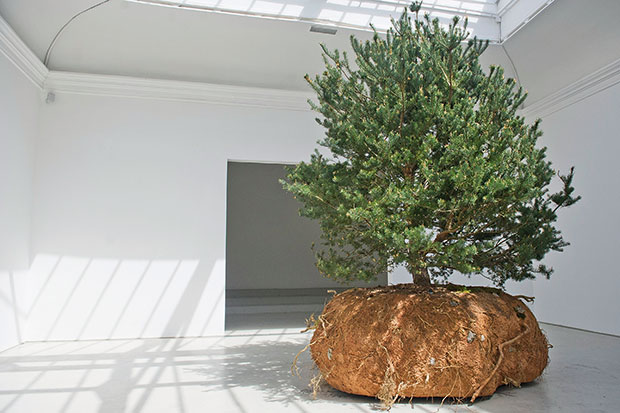I have never written much about the one-acre shaw of native trees I planted in 1994, even though it is the delight of my heart, especially when the wild cherries flame in autumn. That’s because I am well aware that en masse tree-planting is a niche activity, open only to the fortunate few. But no one can have envied Thomas Pakenham when, in 1961, he unexpectedly inherited Tullynally Castle in County Westmeath in central Ireland, with its 1,500-acre ‘demesne’ — a third of it park and garden — since he was heavily burdened with death duties. It took nearly 30 years to pay off the debts, before he could begin to concentrate on the delight of his heart, which is planting, caring for and observing the ways of trees as well as travelling the world to look at them.
Before this book, the founder of the Irish Tree Society had published three books on trees that were outstanding for their height, girth, longevity or picturesque history; best known is Meetings with Remarkable Trees, published in 1996. The present book is an account of his encounters with trees, both home and abroad, during 2013 (with some harking back), and it should appeal to those tree-enthusiasts for whom size and age are not everything.
Pakenham is a historian, author of well-regarded histories of the Boer war, the scramble for Africa and the Irish rebellion of 1798. Historians make very good tree people because they respect both the past, with its particular and changing atmospheres, as well as posterity. After all, most trees span more than one human lifetime, and the story of trees has often been part of the story of the land and even the people. And historians can salt the worthy fare of plant descriptions with tales of plant hunters and gardeners from the past. Pakenham’s writing is brisk, clear, personal and pleasantly epigrammatic, although at times a little slapdash and repetitious. The book includes a decidedly unilluminating plan of the demesne, but the author’s photographs are good.
His historian’s hardheadedness is sometimes undermined by a romantic’s sentiment. He thinks of his favourite trees almost as people; they are certainly described in anthropomorphic terms and he mourns their loss when they blow over or die of some terrible disease. And each time a grandchild is born, a tree is planted for them. He is refreshingly candid about his manifold mistakes (which can, of course, take decades to emerge clearly) and prepared to report acerbic comments from his occasionally rather underwhelmed wife, Valerie. I rather wished she had come into the story more.
The Tullynally demesne boasts an extensive arboretum, planted with both exotic and native species, but it also contains a large timber plantation. Pakenham is clear-eyed about the relative values of various commercial species, and has little time for arboricultural or environmental purism.
He sees the good in every tree — even the sycamore — but then trees are at least partly his living.
The year he has chosen to chronicle was mostly spent at Tullynally, but there were adventurous excursions with fellow dendrophiles to Argentina and Sikkim. Some of the best stories in the book revolve around his attempts to belie his 80 years and hunt plants like a young ’un, for example when collecting seed of Rhododendron falconeri in mountainous forest where bears and snow leopards dwelt. The excitement he feels at seeing his wild-collected seed germinating in the Tullynally greenhouse is genuine and touching. Readers should finish this book with a lively sense of the importance and allure of trees, even if they have never so much as planted an acorn.






Comments